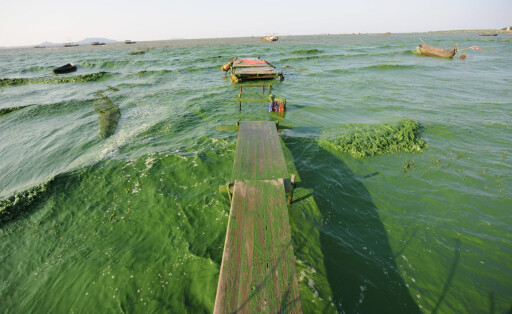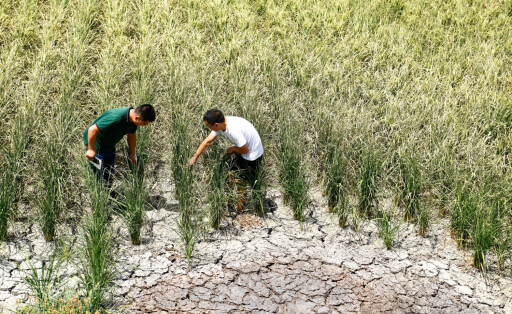Environment in China is often sacrificed for economic growth, although China is the largest emitter of greenhouse gases. China's greenhouse gas emissions exceeded 14 gigatons in 2019. Compared to 1990, this means emissions have more than tripled. China's emissions will also rise steadily through 2030. This is because the Communist Party led by President Xi Jinping does not want to risk jobs or geopolitical strength when balancing economic growth and environmental protection. Read the latest news on the environment in China from the Table.editorial team!
What about the environment in China?
Things are not looking good for the environment in China. China's pollution has gotten almost completely out of control during its decades of growth. Despite its size, it ranks eleventh in the world's worst polluted countries. In 2020, China's CO2 emissions were greater than all other developed countries combined for the first time. No wonder, 70 percent of the energy in this country of 1.4 billion people comes from fossil fuels. This has implications for the environmental situation in China. Each year, more than 50,000 public lawsuits are filed related to environmental problems. A quarter of surface water is considered heavily polluted and 16 percent of soil is contaminated. China's environmental policy was late in responding to the situation.
Is economic growth more important to China than environmental protection?
China's environmental policy is in constant contrast to China's economic growth. The official announcement by President Xi Jinping is that CO2 emissions will continue to grow until 2030 and only then will they fall. Although the People's Republic wants to be climate-neutral by 2060, it wants to have risen to become the new economic and political world power by 2049. In China, the battle between the economy and environmental protection has been raging for several years. This is because industry in China is extremely energy-intensive. Although the Chinese Communist Party is planning green growth, the necessary structural change is stalling because the environmentally friendly technologies now available do not create the same amount of jobs. Local officials always fear job losses with environmentally friendly initiatives and often refrain from providing subsidies.
How does China pollute?
China's energy sector is the largest emitter of greenhouse gases. It is directly responsible for 27 percent of emissions. If you include indirect emissions - i.e., the demand for electricity - another 28 percent are added. China also has a massive waste problem. Waste and recycling management does not yet exist on a large scale.
What role does industry and trade play in pollution?
China's economic growth is still based on cheap labor and energy-intensive heavy industry. Transformation is taking place only slowly. Greenhouse gas emissions from steel and cement plants alone are as high as the entire emissions of the EU. This also affects trade. This is because the People's Republic produces half of the world's steel and cement. In the Corona year 2020, for example, the country exported 53 million tons of steel.
What environmental problems does China have to contend with?
Because the environmental situation in China has worsened over the years, the People's Republic is fighting against serious environmental problems. One of these is air pollution. More than one million people die prematurely in China every year because the high levels of particulate matter, nitrogen dioxide and ozone lead to lung cancer, respiratory diseases or strokes. Thunderstorms are also on the rise in China, leading to increasingly frequent disasters such as flooding. Another environmental problem in China is the shortage of water. 80 percent of all drinking water is located in the south. However, every second Chinese lives in the north. There, the groundwater level has been dropping dangerously for years. The People's Republic is fighting the spread of the Gobi Desert with the largest reforestation program in history - the Great Green Wall. In the south, the situation is aggravated by the fact that 85 percent of urban waterways are polluted.
What is China doing to combat environmental pollution?
The People's Republic is trying to take countermeasures. China's environmental protection measures include emissions trading, barriers to investment in coal-fired power and a ban on the import of plastic waste. In addition, extensive controls on environmental regulations were introduced in 2021. In the fall of that year, environmental inspectors had inspected 1,600 companies in key industries and found problems in 900.
What is China's environmental policy?
China's environmental policy is based on green development as a path to shared prosperity, as stated in the 14th Five-Year Plan. Climate protection is to be achieved with green production methods and more sustainability in everyday life. Reforms in the steel, petrochemical, chemical and building materials industries are intended to increase their efficiency while reducing CO2 emissions. Of central importance here is the expansion of renewable energies. Based on President Xi Jinping's target of China becoming climate-neutral by 2060, the International Energy Agency (IEA) has developed a climate roadmap with Chinese researchers. According to the plan, solar energy is to account for the largest share of the energy mix by 2045. To this end, the Communist Party is vigorously promoting the expansion of renewable energies. China's National Energy Administration has called on provinces to submit solar and wind power projects. By 2024 at the latest, 200 gigawatts of green electricity are to be fed into the grid.
News on China and environmental protection
Climate policy is not regional, but global. The impact of China's CO2 emissions affects the entire world. China's environmental policy and environmental protection measures are of corresponding importance. Table.Media's editorial staff has all the news on this topic.






